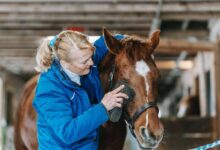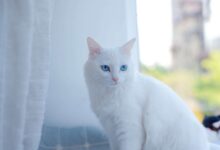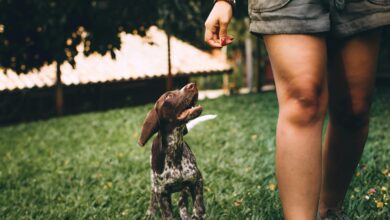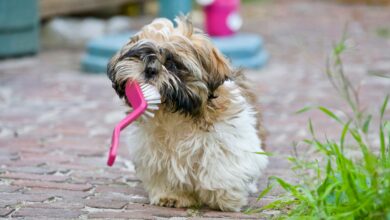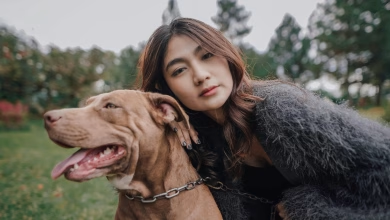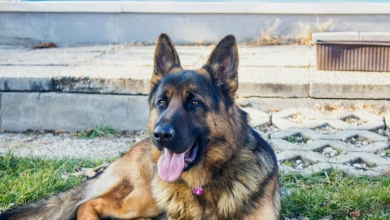
Brachycephalic dog breeds, characterized by their distinctive flat-faced features, necessitate a grooming approach tailored to their unique anatomy. In this in-depth guide, we unravel the intricacies of grooming for specific brachycephalic breeds, including pugs, French bulldogs, shih tzus, bulldogs, and boston terriers. From understanding the impact of their facial structure to addressing breed-specific needs, let’s delve into the nuances of maintaining the health and well-being of these endearing companions.
Understanding Brachycephalic Dog Grooming
Unveiling the Unique Needs
Brachycephalic breeds, such as pugs and French bulldogs, have distinct facial structures that require specialized grooming attention. The compressed skull and shortened airways of these breeds make them more prone to certain health issues, emphasizing the importance of grooming practices tailored to their well-being.
Navigating the Breed Spectrum:
Each brachycephalic breed presents its own set of grooming challenges and requirements.
- Pugs: These charming dogs with their wrinkled faces require meticulous attention to facial folds to prevent skin issues.
- French Bulldogs: With their compact build, Frenchies necessitate ear cleaning to maintain proper ventilation and prevent infections.
- Shih Tzus: Long-haired and often prone to matting, shih tzus demand regular brushing to keep their coat healthy and tangle-free.
- Bulldogs: The iconic wrinkled face of bulldogs requires specialized care to prevent skin infections, making routine cleaning crucial.
- Boston Terriers: These energetic dogs benefit from regular nail trimming and shedding management to keep their coat in top condition.
Essential Grooming Practices
Face Fold Cleaning:
Dive into the specifics of maintaining the cleanliness of facial folds—a critical aspect for breeds prone to moisture accumulation.
- Choosing Cleaning Solutions: Vet-approved solutions for effective yet gentle cleaning.
- Preventing Irritation: Techniques to clean folds without causing discomfort.
Shedding Management:
While brachycephalic breeds may not shed as much as others, shedding management is vital for coat health.
- Brushing Techniques: Tailoring brushing routines to coat types.
- Skin Health: Minimizing allergens and maintaining healthy skin.
Ear Cleaning:
Delve into the specifics of ear cleaning, especially crucial for breeds like French Bulldogs and Bulldogs.
- Choosing Cleaning Products: Safe solutions for ear hygiene.
- Preventing Infections: Techniques to safeguard against common ear issues.
Nail Trimming:
Uncover the intricacies of nail trimming, essential for breeds like Boston Terriers.
- Selecting Nail Clippers: Choosing tools suitable for brachycephalic breeds.
- Avoiding the Quick: Guidelines to prevent cutting into sensitive areas.
Best Tools and Techniques
Choosing the Right Brush:
Explore the diversity of coat types among brachycephalic breeds and identify suitable brushes for effective grooming.
- Slicker Brushes: Ideal for short and smooth coats.
- Bristle Brushes: Effective for longer hair varieties.
- Regular Grooming Tools: Combs, deshedding tools, and their role in maintaining a healthy coat.
Grooming at Home:
For pet parents eager to take an active role in grooming, break down the process into manageable steps.
- Positive Reinforcement: Creating a positive grooming environment.
- Consistent Schedules: Establishing routines for optimal results.
Professional Grooming Insights:
For those seeking professional services, understand the criteria for choosing groomers experienced with brachycephalic breeds.
- Specialized Knowledge: The importance of familiarity with breed-specific grooming requirements.
- Stress-Free Sessions: Ensuring a comfortable grooming experience.
Prioritizing Brachycephalic Dog Health
Understanding Brachycephalic Syndrome:
Explore the comprehensive health implications of brachycephalic syndrome and how grooming practices contribute to overall well-being.
- Respiratory Considerations: The role of grooming in maintaining clean airways.
- Skin and Coat Health: Preventing dermatological issues through effective grooming practices.
Brachycephalic Dog Breeds
Grooming for brachycephalic dog breeds transcends aesthetic concerns; it is a fundamental aspect of their health and happiness. With an in-depth understanding of their unique needs and the application of specialized grooming practices, you are now equipped to embark on a grooming journey that ensures your flat-faced companion thrives in every aspect. Whether you’re a first-time pet parent or an experienced groomer, let your dedication to their well-being shine through in every grooming session. Your brachycephalic friend deserves nothing less than the best, and with this guide, you’re well on your way to providing it.
FAQs: Brachycephalic Dog Breeds
Q: How often should I clean the facial folds of my brachycephalic dog?
- A: Regular cleaning is essential; aim for at least once a week to prevent moisture buildup and potential skin issues.
Q: What’s the best brush for grooming a shih tzu’s long coat?
- A: Opt for a slicker brush to effectively detangle and maintain the health of your shih tzu’s luxurious, long-haired coat.
Q: Is professional grooming necessary for brachycephalic breeds?
- A: While grooming at home is possible, professional services, especially from experts familiar with these breeds, can enhance overall care.
Q: How can I prevent my brachycephalic dog from shedding excessively?
- A: Regular brushing with an appropriate tool for your dog’s coat type helps manage shedding and promotes a healthier coat.
Q: Why is nail trimming crucial for brachycephalic breeds like Boston Terriers?
- A: Nail trimming prevents discomfort and potential joint issues, ensuring your Boston Terrier remains agile and comfortable.

